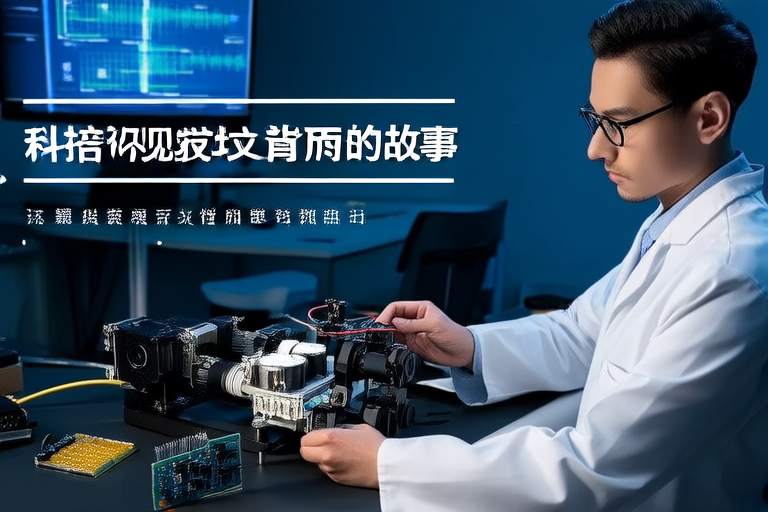Behind the Scenes: Innovations Driving the Evolution of Computer Vision
Introduction
Computer vision, a subfield of artificial intelligence, focuses on enabling machines to interpret and understand visual information from the world around them. Over the past few decades, this technology has evolved from rudimentary algorithms to sophisticated systems capable of recognizing, analyzing, and responding to complex visual data. The ability of computers to ‘see’ and process images has profound implications for numerous industries, from healthcare to entertainment. This evolution has been driven by significant advancements in hardware, software, and algorithmic techniques, which together have enabled computers to perform tasks previously thought to require human-level intelligence.
Historical Context
The origins of computer vision can be traced back to the mid-20th century when early researchers began exploring ways to teach computers to recognize patterns in visual data. One of the earliest milestones was the development of edge detection algorithms in the 1960s, which allowed computers to identify boundaries between objects. In the 1980s, the introduction of neural networks marked a significant leap forward, offering a more flexible approach to pattern recognition. However, it wasn’t until the advent of deep learning in the 2010s that computer vision truly began to flourish, with breakthroughs in convolutional neural networks (CNNs) and image classification competitions like ImageNet setting new standards for performance.
Key Technologies
Deep Learning: At the heart of modern computer vision lies deep learning, a subset of machine learning that uses multi-layered neural networks to model complex patterns in data. These networks are trained on vast datasets, allowing them to learn hierarchical representations of visual features. CNNs, a type of deep neural network specifically designed for processing grid-like data such as images, have become the backbone of many computer vision applications. They excel at identifying edges, textures, and shapes within images, making them invaluable for tasks like object detection and facial recognition.
Transfer Learning: Transfer learning enables pre-trained models to be adapted for new tasks, significantly reducing the need for extensive retraining. This technique has proven particularly useful in scenarios where labeled data is scarce. By leveraging knowledge gained from one domain to improve performance in another, transfer learning accelerates the development of specialized computer vision solutions. For instance, a model trained on general image recognition can be fine-tuned for medical imaging, enhancing diagnostic accuracy without requiring a massive dataset.
Applications
Healthcare: In the medical field, computer vision is revolutionizing diagnostics and patient care. Systems can analyze X-rays, MRIs, and CT scans to detect anomalies with high precision, aiding radiologists in their assessments. For example, deep learning algorithms have achieved impressive accuracy in identifying signs of cancer in mammograms, potentially leading to earlier diagnoses and better treatment outcomes.
Autonomous Vehicles: Self-driving cars rely heavily on computer vision to navigate safely. Cameras mounted on vehicles capture real-time imagery of roads, pedestrians, and obstacles. Advanced algorithms process this data to make split-second decisions, ensuring the safety of passengers and other road users. Companies like Tesla and Waymo are at the forefront of integrating cutting-edge computer vision technologies into their autonomous vehicle platforms.
Security: Surveillance systems equipped with computer vision offer enhanced security through facial recognition and anomaly detection. These systems can automatically alert authorities to suspicious activities or unauthorized individuals, improving public safety. Additionally, computer vision plays a critical role in access control, enabling secure entry based on biometric data.
Retail: In the retail sector, computer vision is transforming customer experiences and operational efficiencies. Smart shelves monitor inventory levels, triggering automatic reordering when stock runs low. Meanwhile, facial recognition systems personalize shopping experiences by recommending products tailored to individual preferences. Furthermore, cashier-less stores powered by computer vision eliminate the need for checkout lines, streamlining the purchasing process.
Entertainment: The entertainment industry leverages computer vision for immersive experiences and content creation. Virtual reality (VR) and augmented reality (AR) applications use computer vision to track user movements and overlay digital elements onto real-world environments, creating interactive and engaging experiences. Additionally, computer vision enhances special effects in movies and video games, enabling realistic animations and seamless integration of CGI elements.
Challenges and Future Directions
Despite its rapid progress, computer vision faces several challenges that must be addressed to realize its full potential. Data privacy remains a significant concern, especially in applications involving sensitive personal information. Ensuring robust data protection measures and transparent data usage policies is essential to building trust among users. Computational efficiency poses another challenge, as training and deploying complex models often requires substantial computing resources. Researchers are actively exploring ways to optimize algorithms and leverage cloud-based infrastructure to mitigate these costs.
Ethical considerations also loom large in the development of computer vision systems. Bias in training datasets can lead to unfair or discriminatory outcomes, particularly in areas like hiring and law enforcement. Ensuring fairness and accountability in AI decision-making processes is crucial for maintaining public confidence. As the field continues to advance, interdisciplinary collaboration between technologists, ethicists, and policymakers will be vital in shaping responsible and equitable technological advancements.
Looking ahead, the future of computer vision holds exciting possibilities. Advances in quantum computing and neuromorphic hardware promise to further accelerate processing speeds and reduce power consumption. Additionally, the integration of computer vision with other emerging technologies such as 5G networks and the Internet of Things (IoT) could unlock new applications and services. For instance, smart cities could utilize computer vision to optimize traffic flow, enhance public safety, and improve environmental sustainability.
Conclusion
In conclusion, the evolution of computer vision from its humble beginnings to its current state of sophistication represents a remarkable journey of innovation and discovery. The field’s rapid progress over the past decade has been fueled by breakthroughs in deep learning, CNNs, and transfer learning, among other technologies. These advancements have paved the way for groundbreaking applications across diverse industries, from healthcare to entertainment. While challenges remain, ongoing research and development hold the promise of even greater achievements. As computer vision continues to evolve, its transformative potential will undoubtedly shape the future of technology and society at large.


